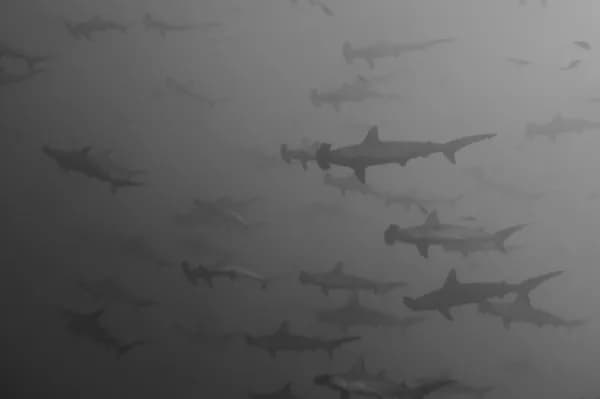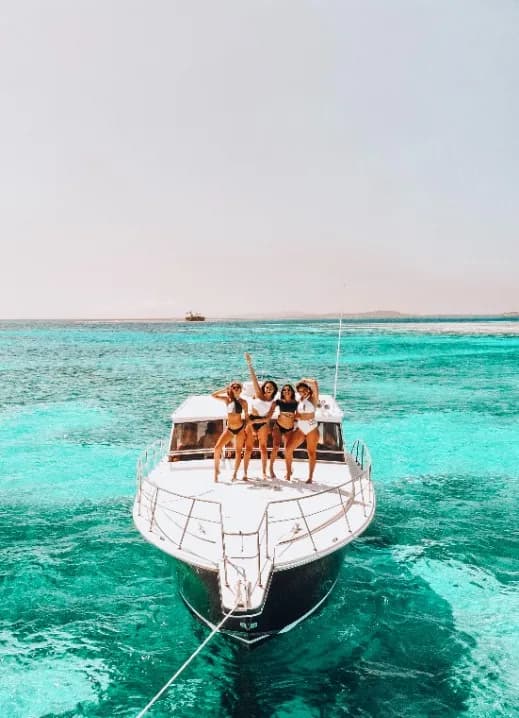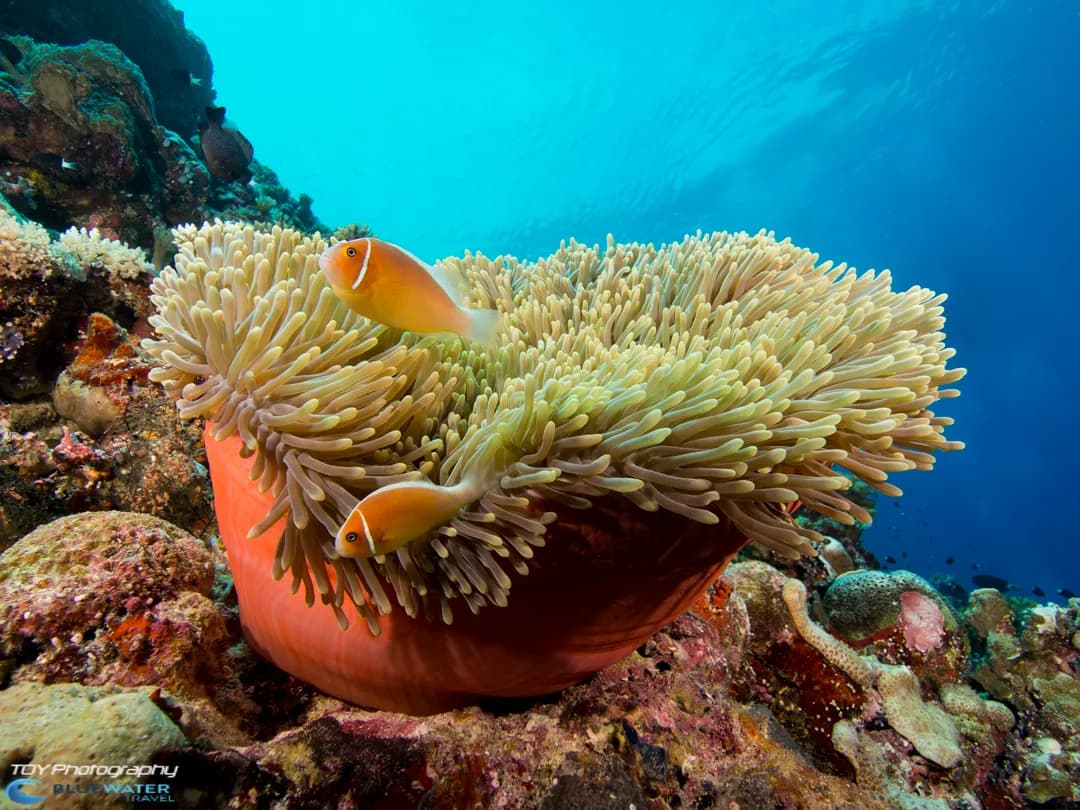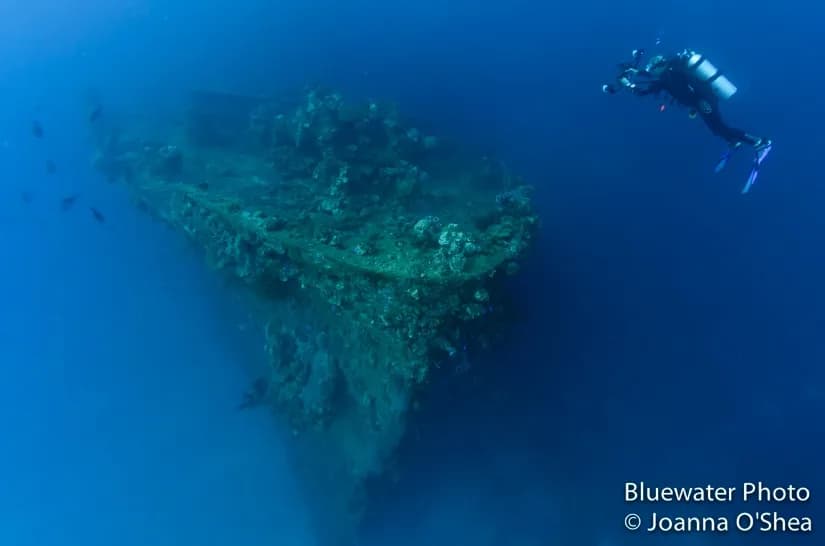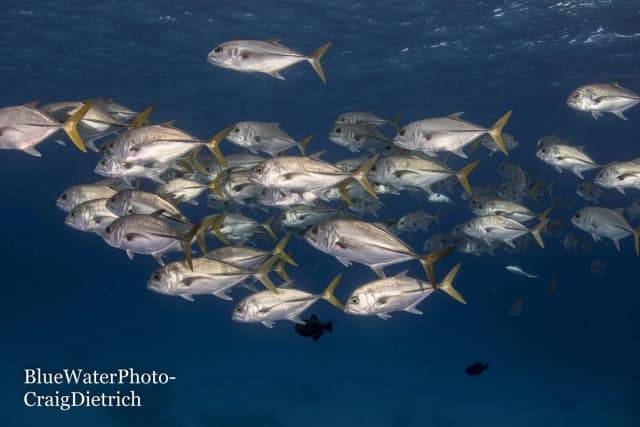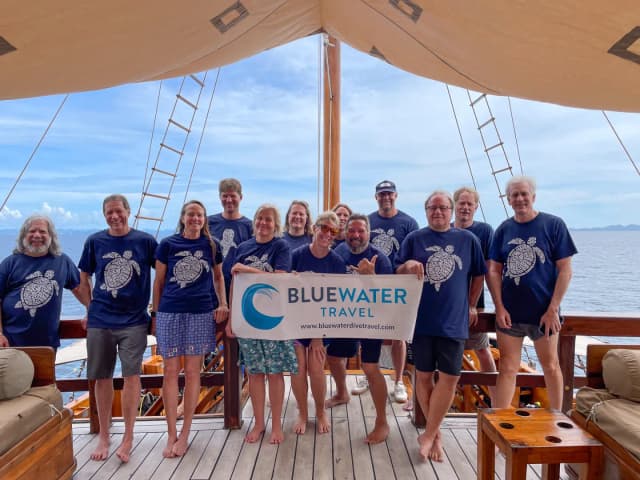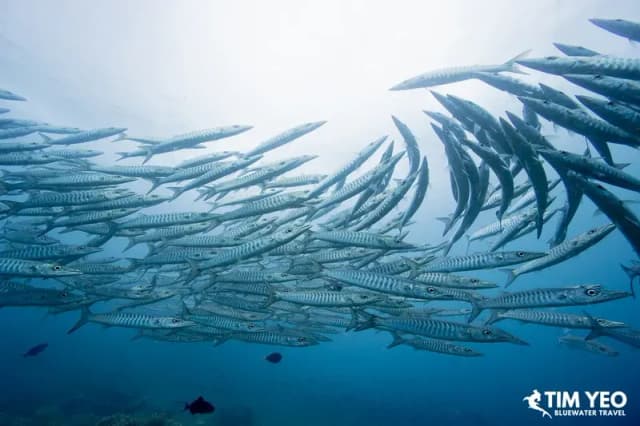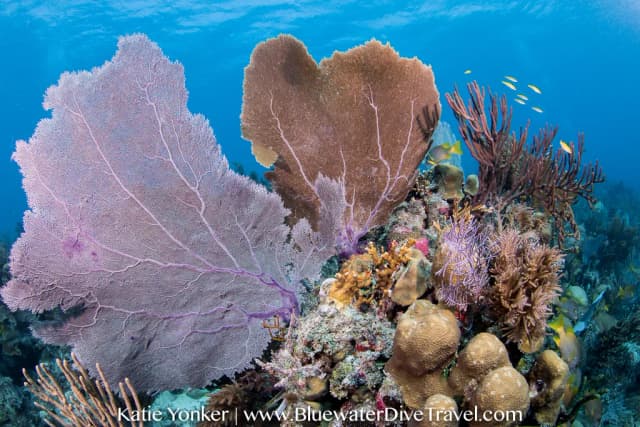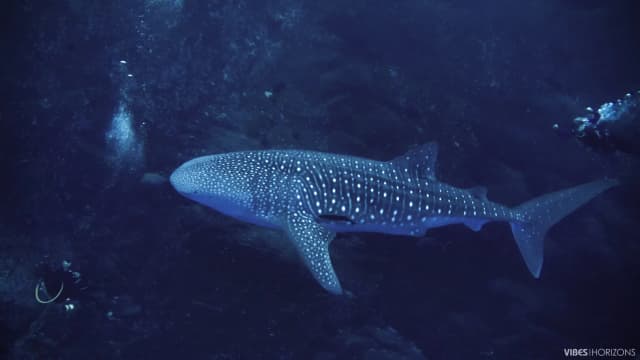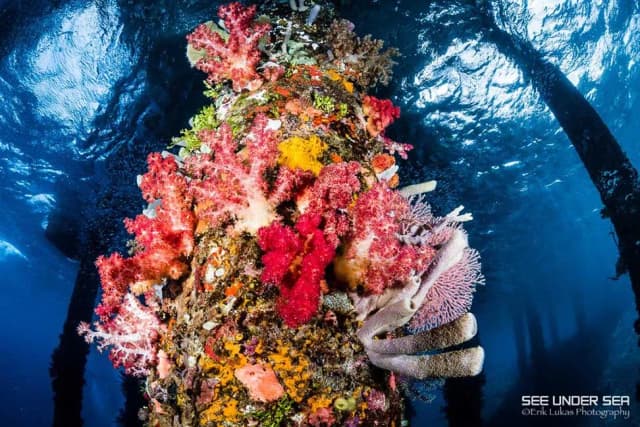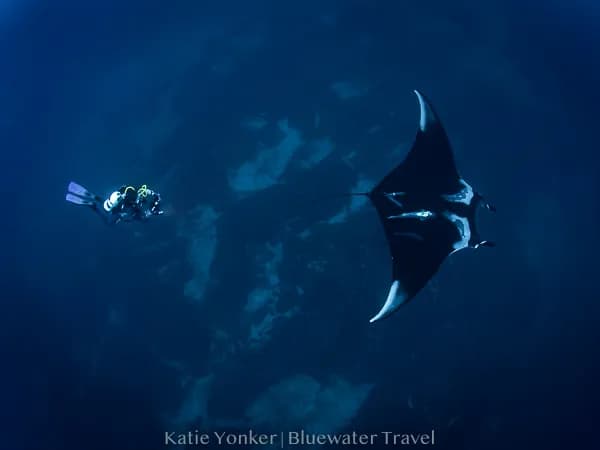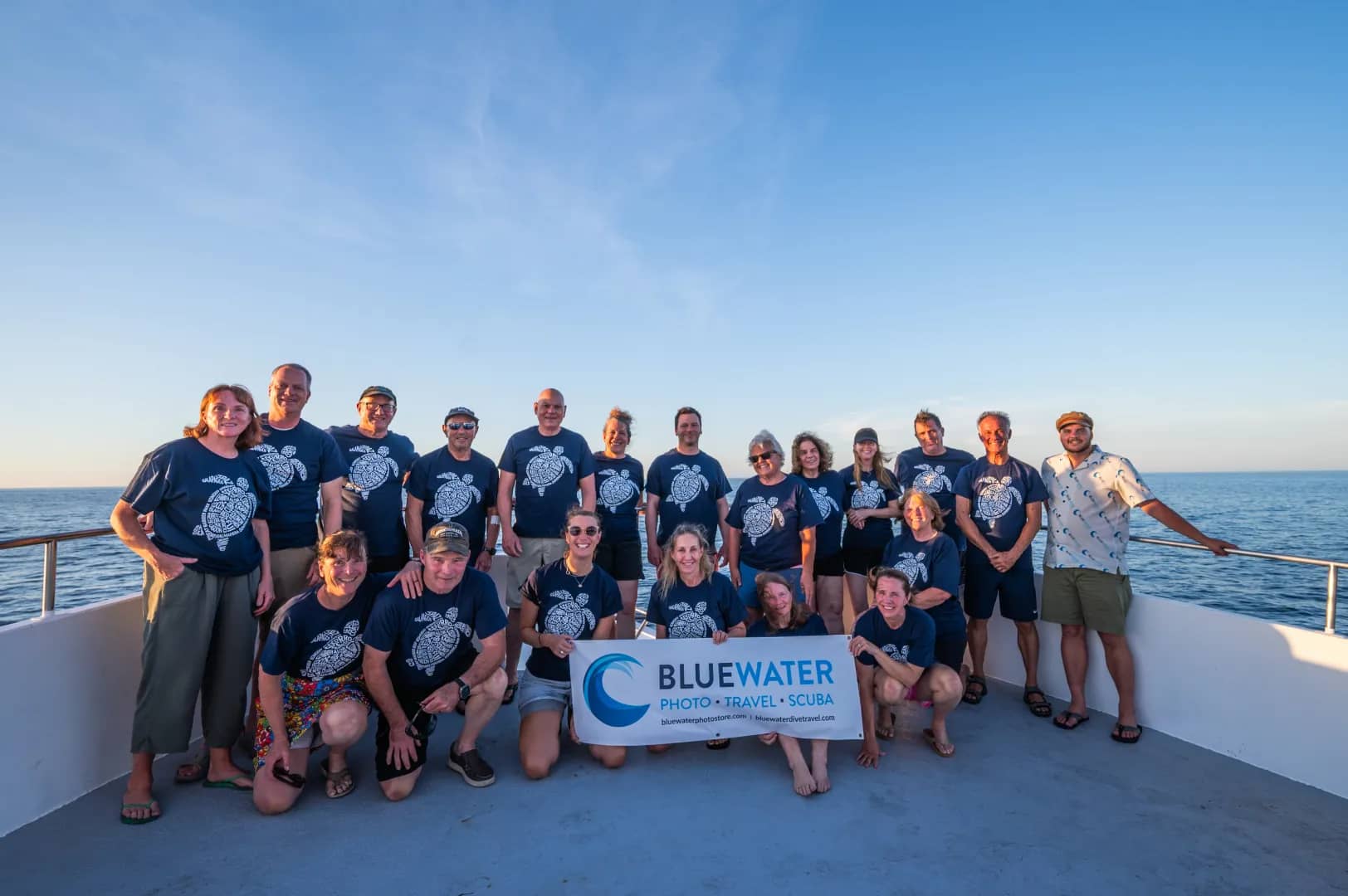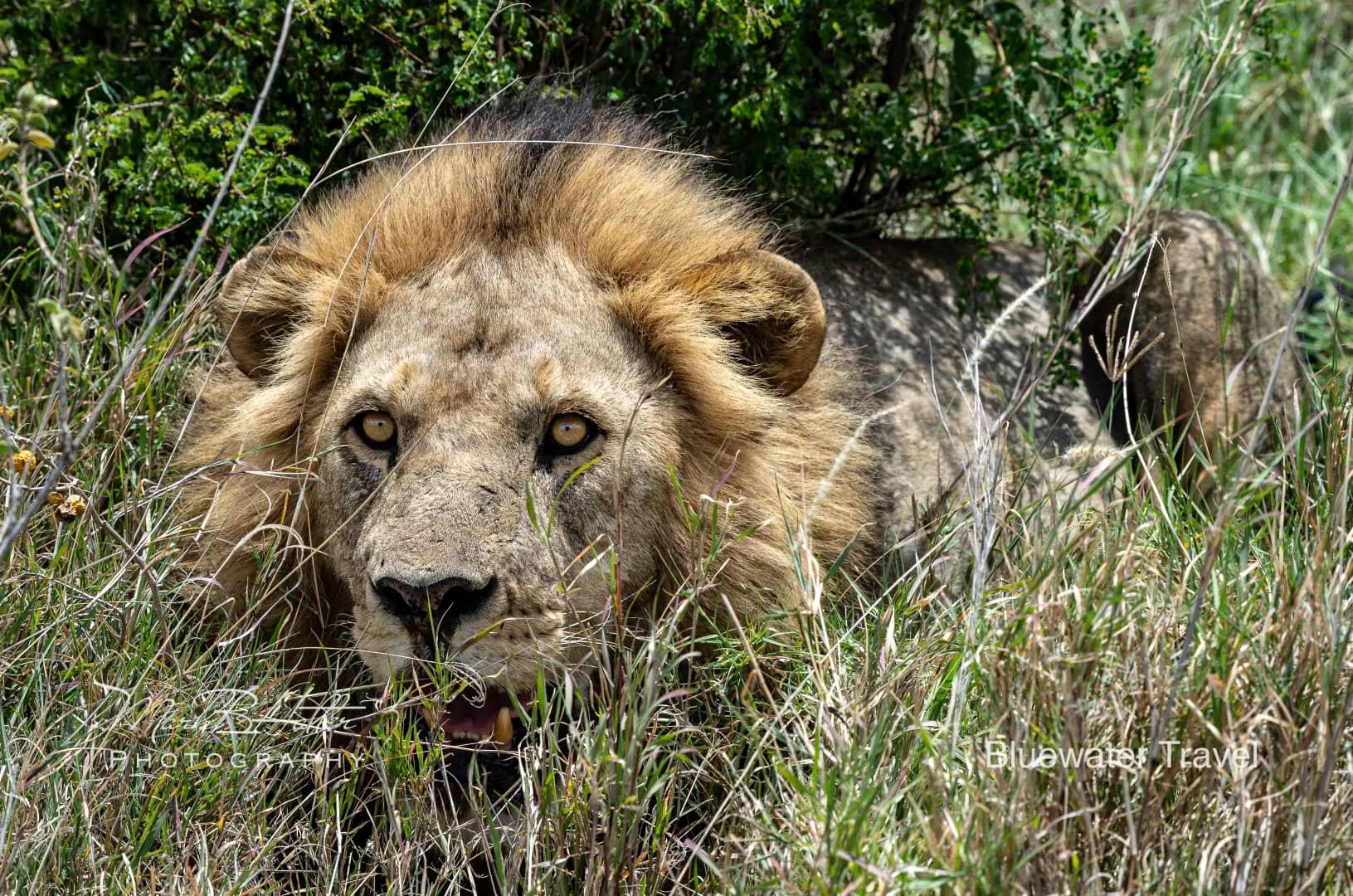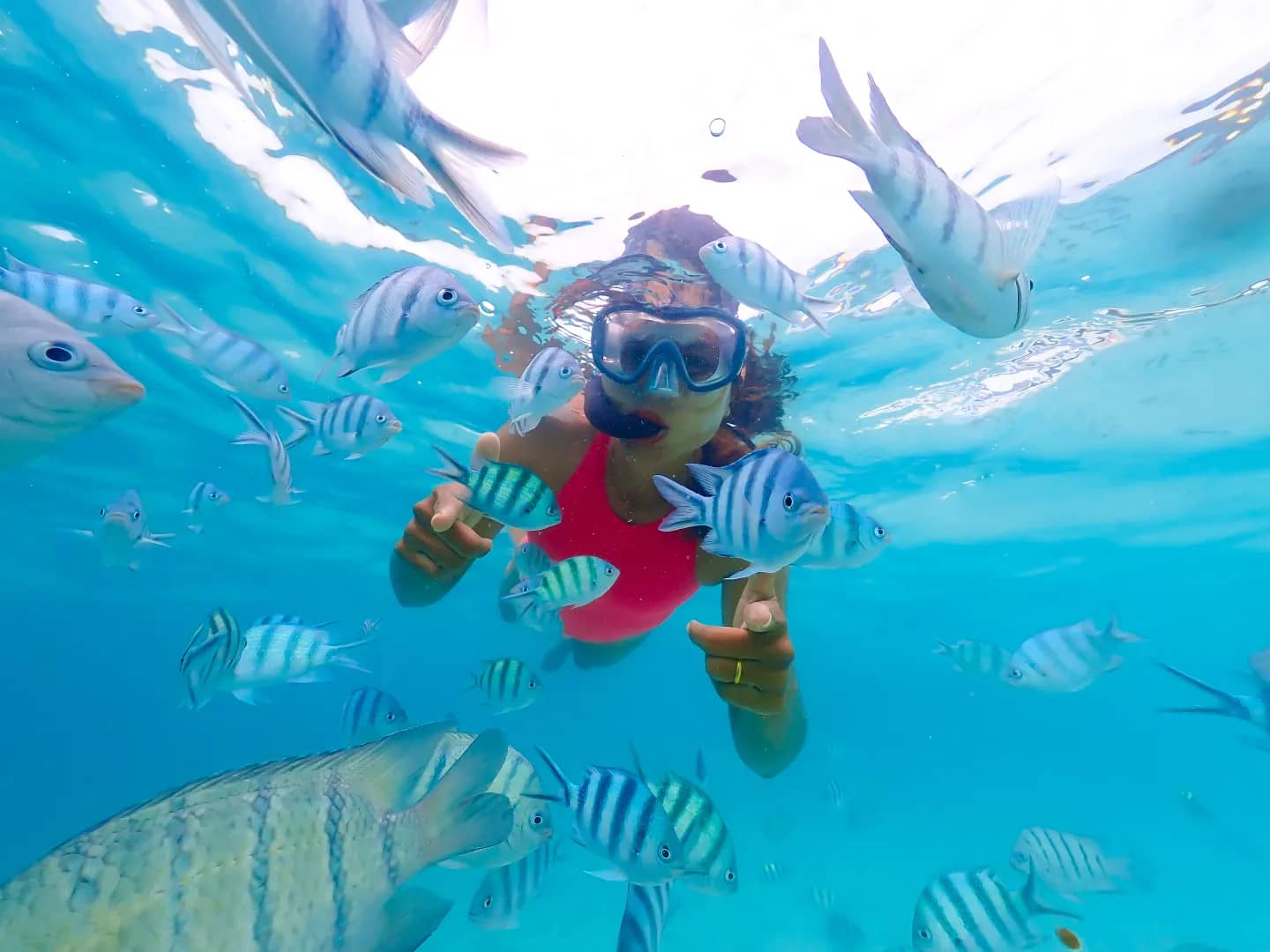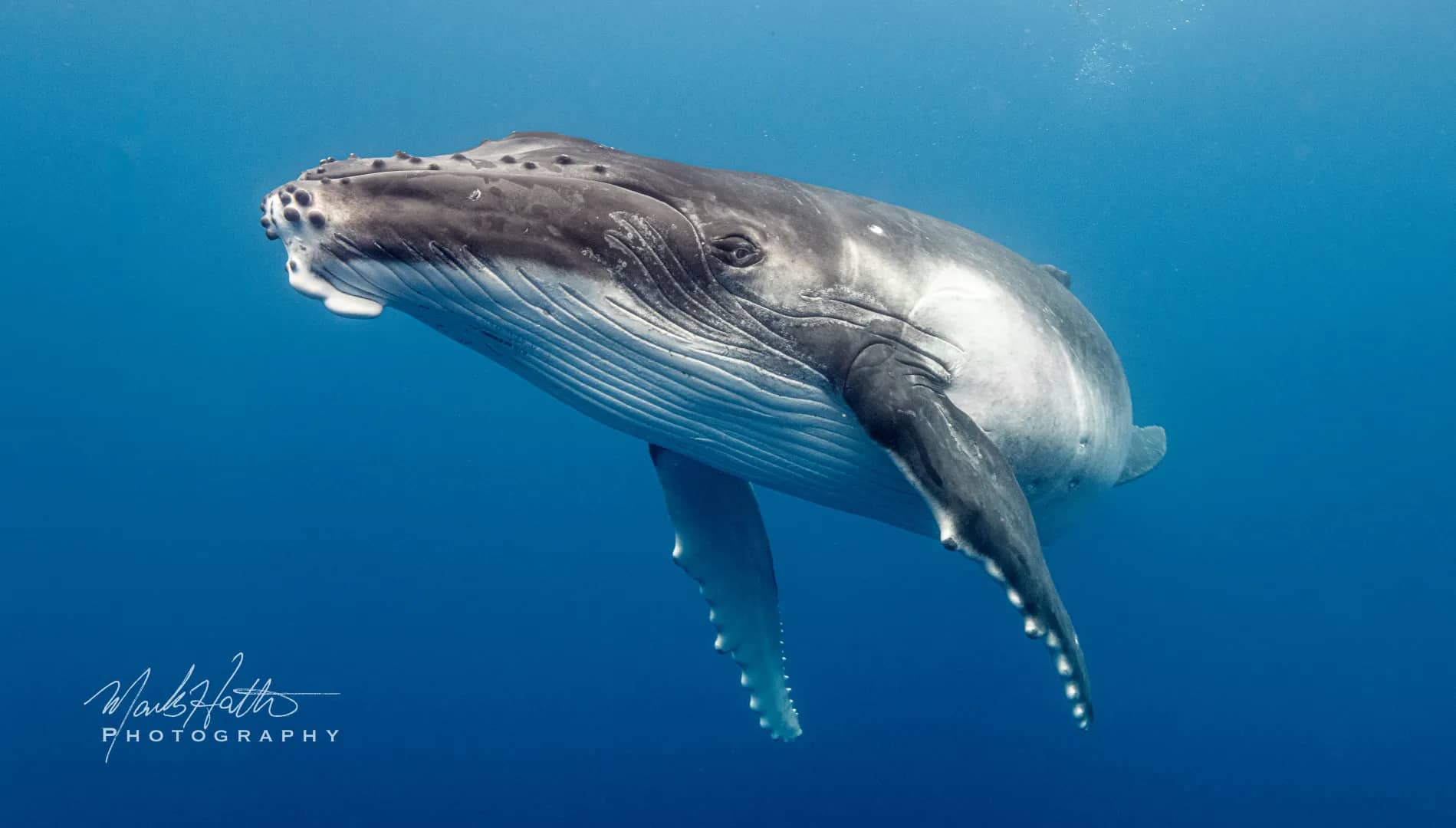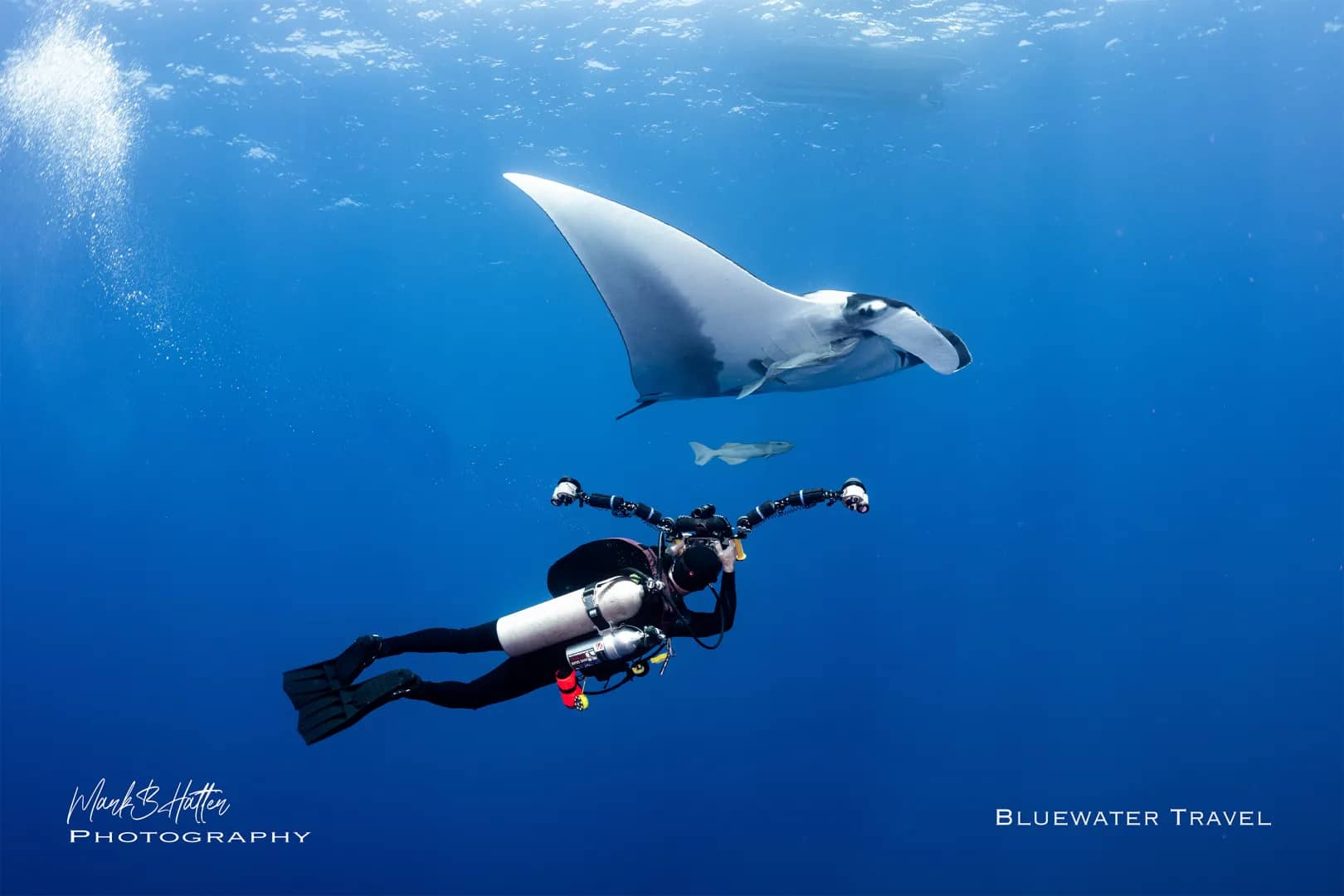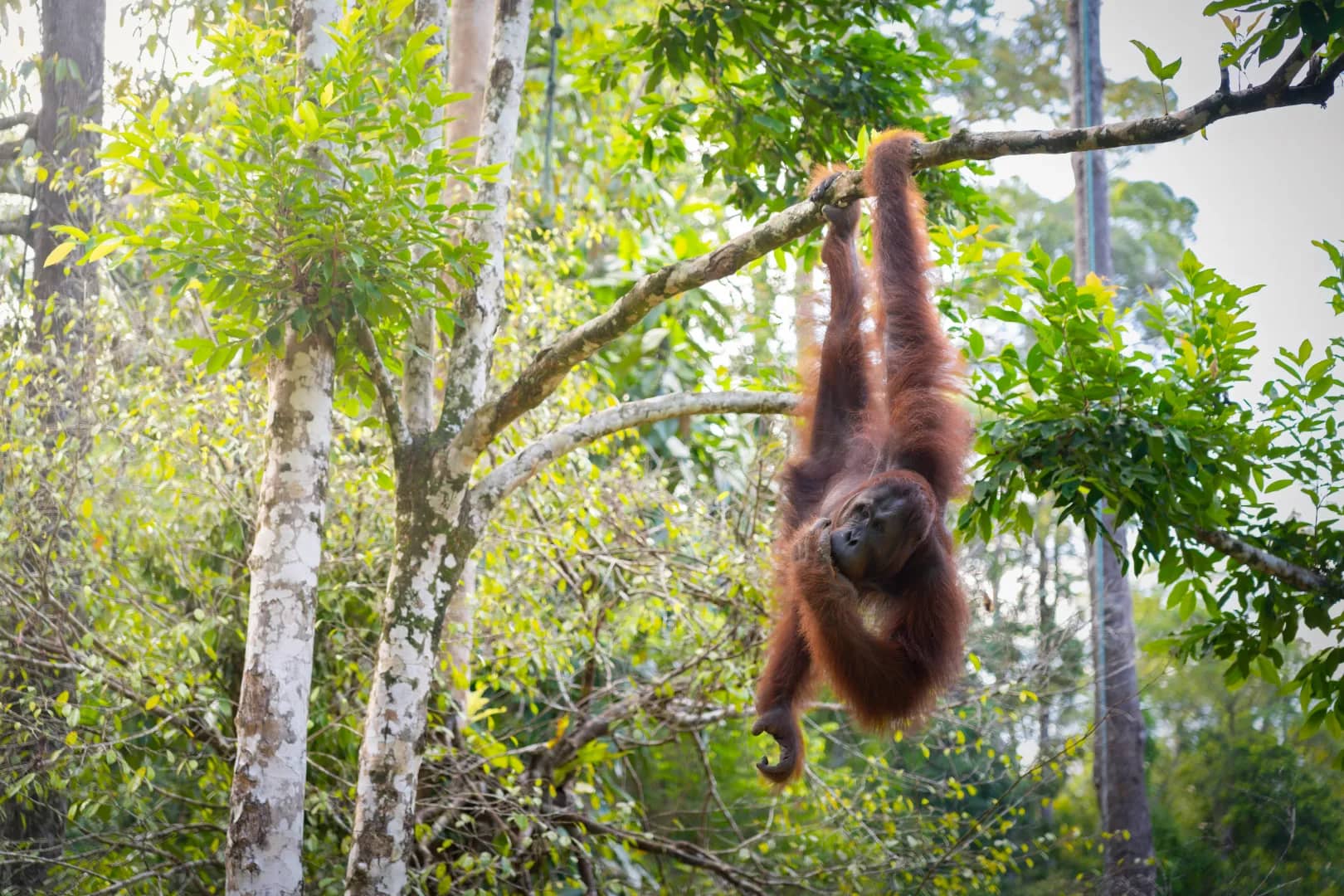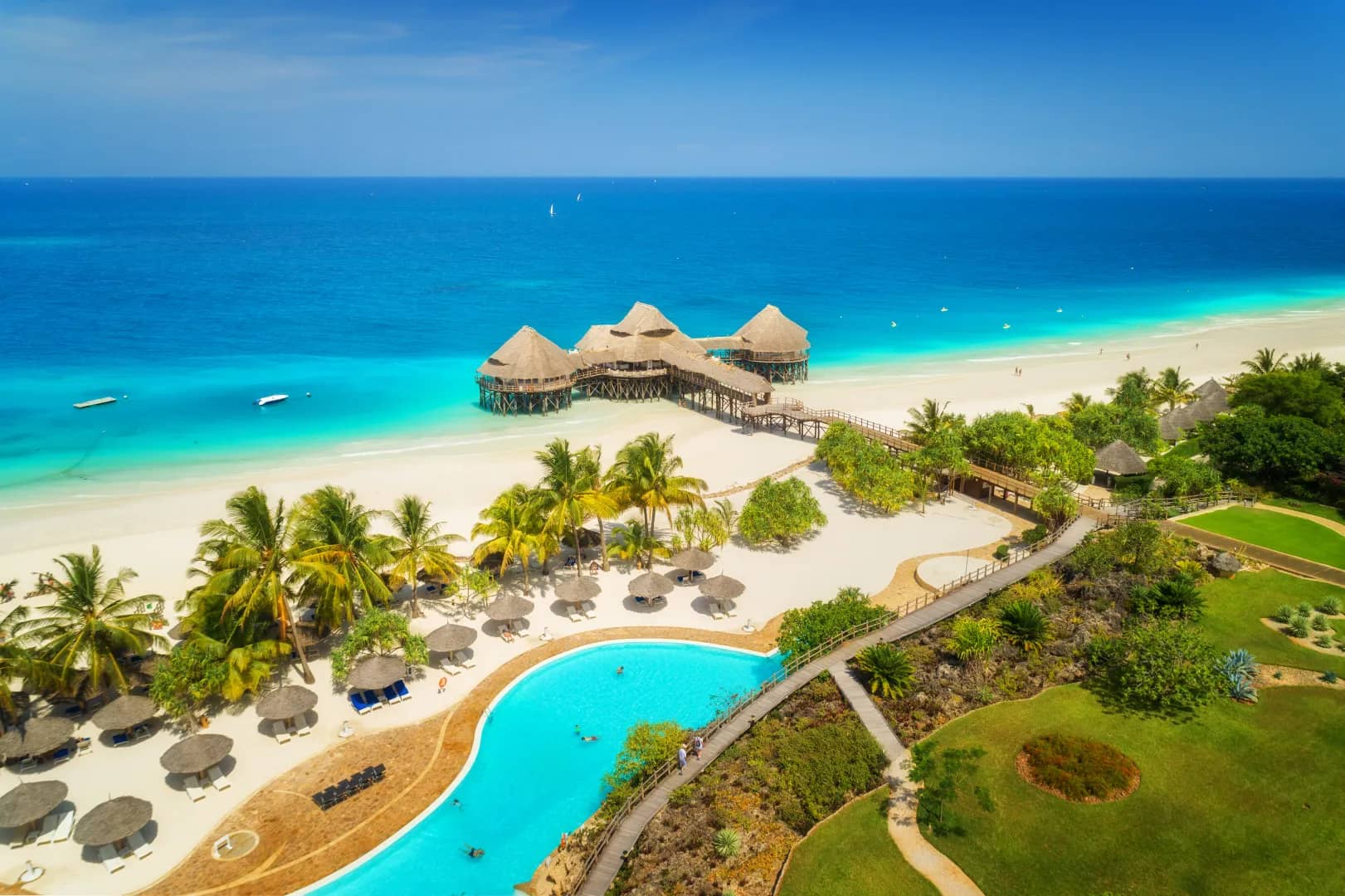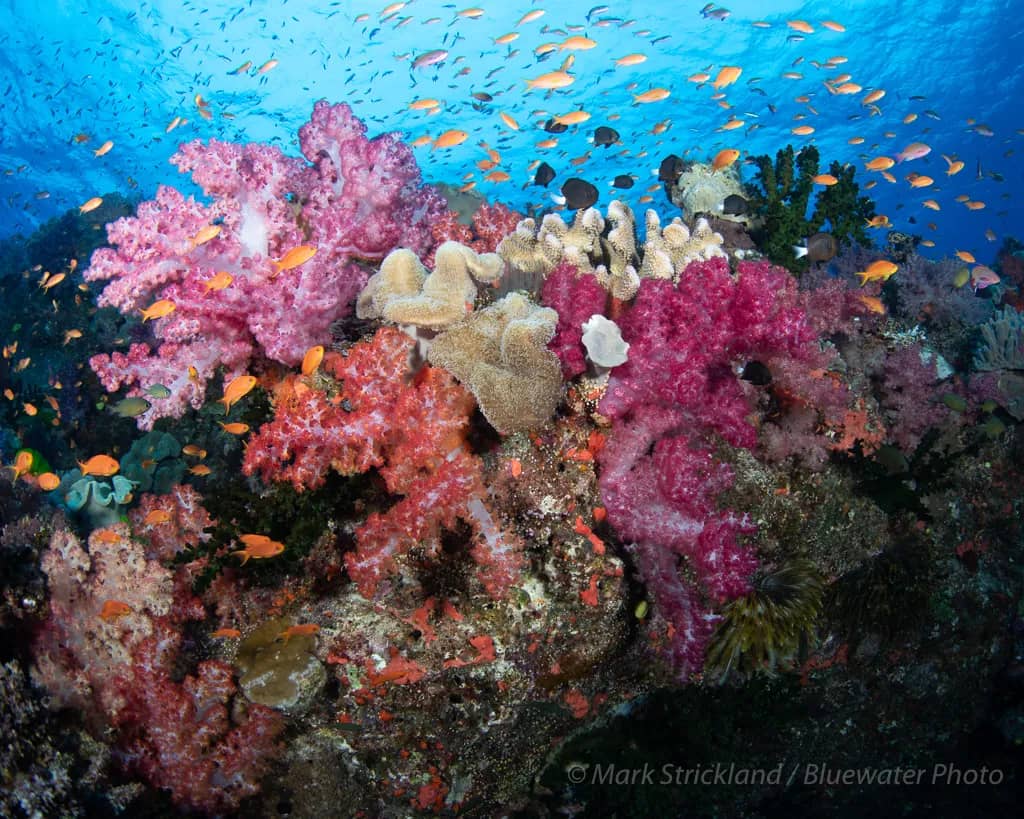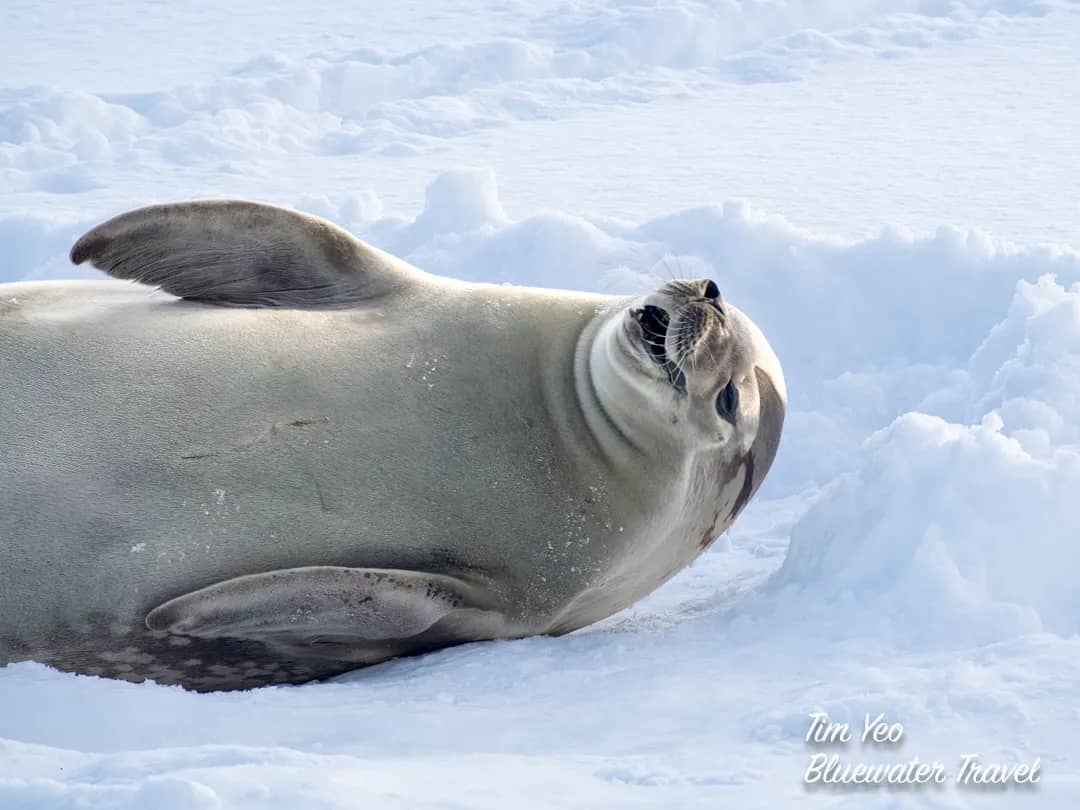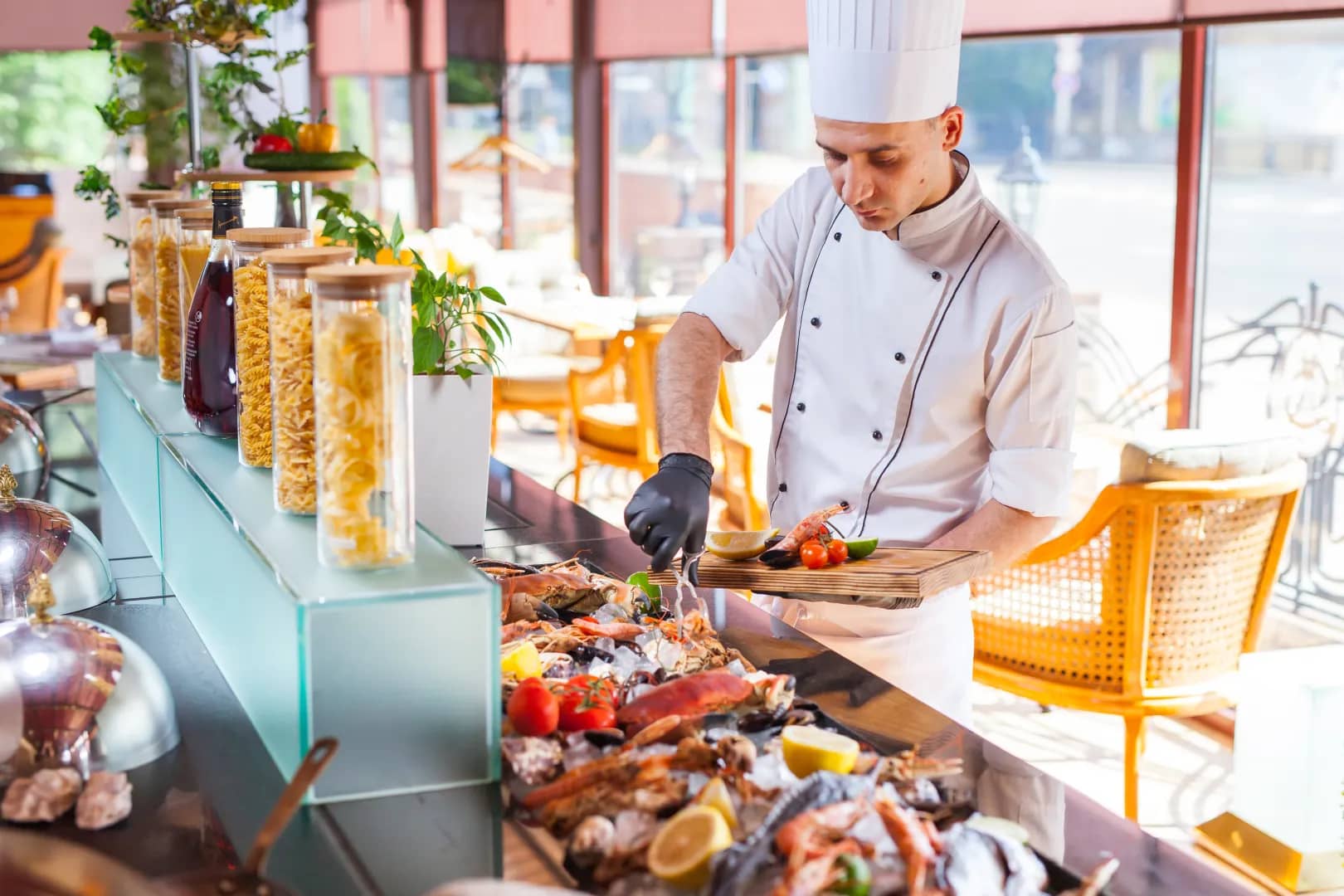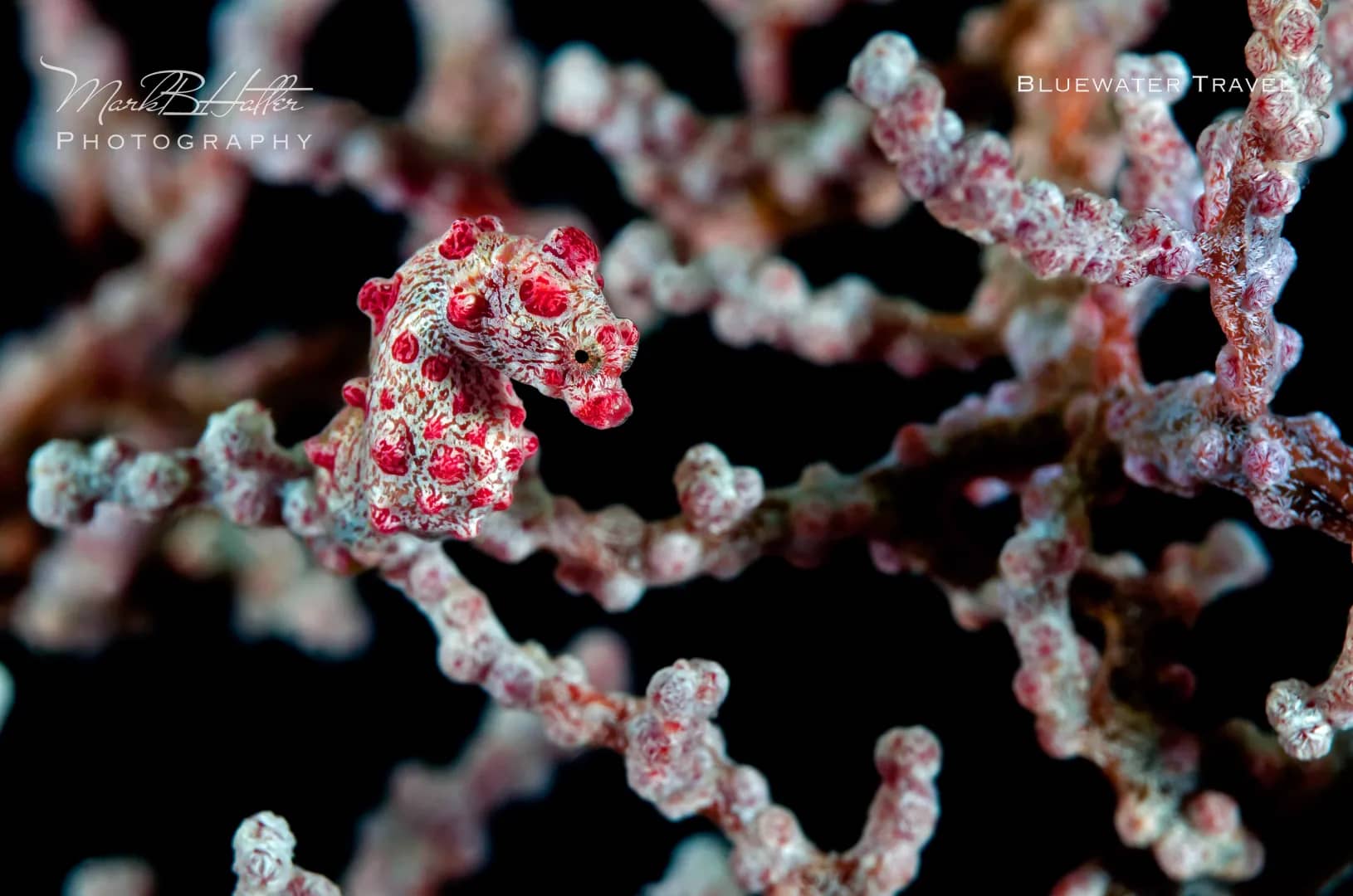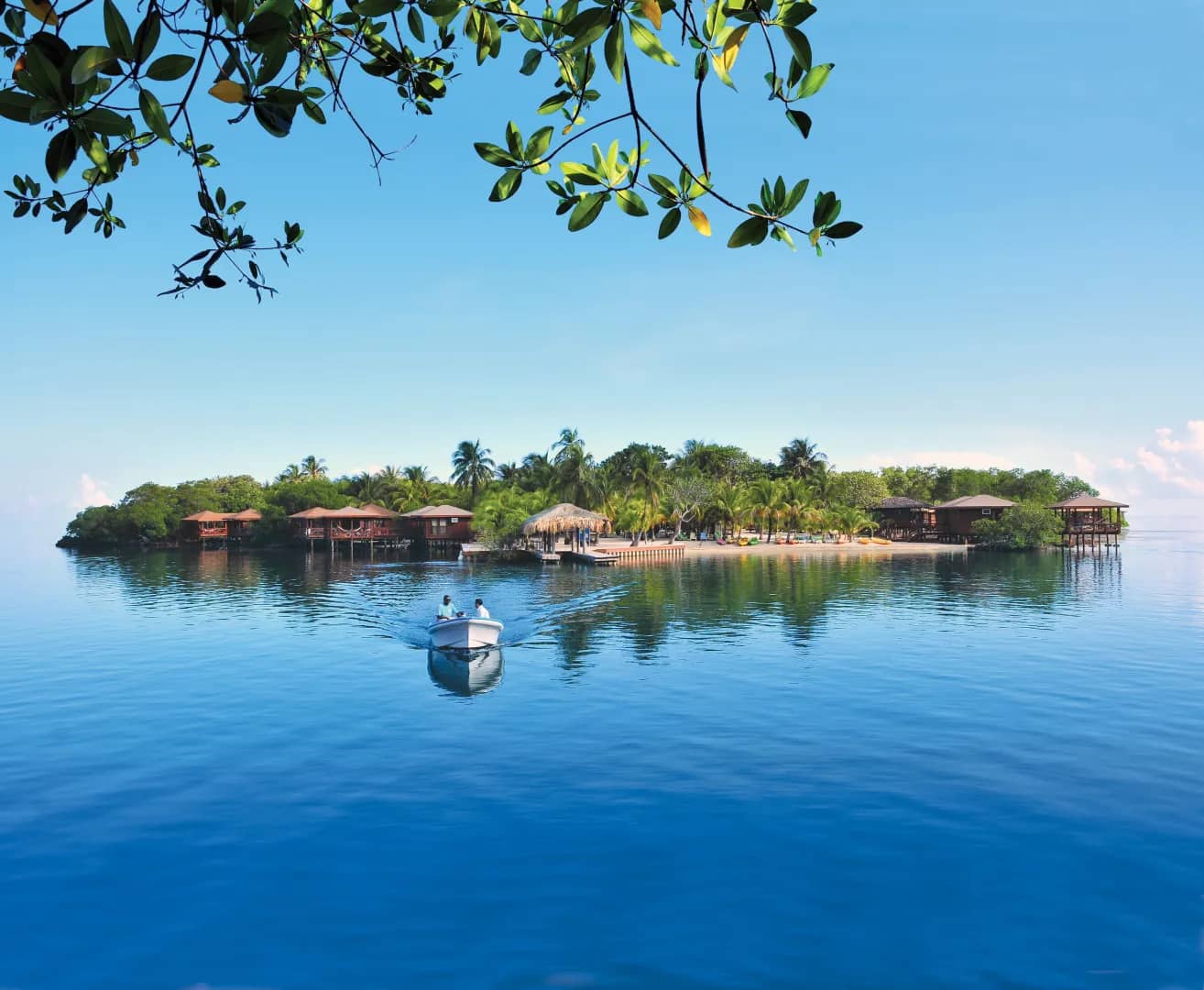Top Remote & Off The Beaten Track Dive Destinations
Following on from our article on the Best Scuba Diving in the World, we now have a great sample of some of the best remote scuba destinations. From the tiny Cocos Island off Costa Rica's west coast to the unique wrecks and reefs of Micronesia, our list encompasses something for everyone. In this article, we cover six off-the-beaten-track dive destinations.
Top Remote & Off The Beaten Track Diving Destinations
1. Cocos Island, Costa Rica
A remote region requiring a long liveaboard crossing, Costa Rica's Cocos Island is well worth the travel time. Discover thrilling blue water diving with strong currents and plenty of large animals.
Big Ocean Diving With Sharks Galore
On par with the Galapagos and Socorro Islands, Cocos Island National Park is a UNESCO World Heritage Centre and a mecca for all things sharky. Diving here typically wouldn't be described as pretty, as there is virtually no colorful coral and, therefore, none of the associated vibrant reef species. But don't be fooled - the waters around Cocos are some of the richest in the world, with Pacific Ocean currents converging to bring all manner of shark species and a myriad of other pelagics to the island.


Most divers visit Cocos to photograph the immense schools of scalloped hammerheads that visit the islands cleaning stations throughout the year. These normally nervous creatures gather here in such numbers that its impossible not to get great shots of them, dive after dive. Whitetip reef sharks are also prolific, and it is an experience to dive with them at dusk when they come out to hunt. Galapagos, silvertip, and silky sharks are all common, and lucky visitors may spot an occasional tiger shark.




Many other impressive pelagic species visit Cocos Island; expect to see tuna, wahoo, and jack, dolphins, and even whale sharks passing through. Marble rays and turtles are also a regular sight along the rocky walls. Such an abundance of exciting marine life is difficult to match, and marks Cocos Island as a standout destination and home to some of the best big animal scuba diving in the world.
Practical Information
Diving Season: Cocos is a year-round destination; however, species sightings will vary slightly depending on when you visit. December - May is the dry season with calmer waters and smoother crossings. The rainy season runs from June - November, and while visibility is lower, sharks appear in greater numbers due to the increase in plankton. June and July are shoulder months when you may experience both big animals and calm seas, but this can be highly variable.
Skill Level: Large surface swells, surge, strong currents and sometimes low visibility can lead to challenging conditions best suited to advanced divers.
Water Temperature: Between 80-82oF (27oC) in the summer, and dropping to 72oF (22oC) in the winter. Expect thermoclines and temperatures in the 60s (15-19oC) at depth.
Getting There: Cocos Island lies about 340 miles southwest of mainland Costa Rica and is only accessible by liveaboard. Fly internationally to Santamaria International Airport (SJO), San Jose and arrange transport with the boat to Puntarenas where youll embark for the 35 - 37 hour crossing, which can be choppy at times.
Where to Stay: Cocos is uninhabited and liveaboard trips generally visit for 7 - 10 nights.
Non-Diving Activities: Most liveaboard trips include a land visit on the island for a short excursion, however we would recommend spending some time in Costa Rica before or after your trip. It is one of the best wildlife destinations in the world.
View the availability of some of the best liveaboards in the Cocos Islands and book online at the best price!
2. Komodo, Indonesia
Visit Komodo for unique landscapes, challenging currents, and all manner of marine life. Don't miss visiting the famous Komodo dragons, which will make you feel like you have gone back in time.
World-Class Drift Dives In Species-Rich Waters
Designated a UNESCO World Heritage Site, the extraordinary Komodo National Parkencompasses three main islands and a wide range of diving to suit all tastes. However, what Komodo is best known for is its world-class drift diving. Here, divers can spend dive after dive flying past rich and colorful coral reefs teeming with life or hook in and enjoy huge schools of fish circling the islands many pinnacles. Komodos diving can be split north and south, and although underwater topography is similar, the marine environments vary dramatically between the islands coastlines.




Influenced by the warm waters of the Sulawesi and Flores Seas, North Komodo enjoys clear blue tropical waters, and diving is typical of what you might expect from other top Indo-Pacific destinations. There are a good number of both big fish and macro sites, and the aquarium show can be quite spectacular.
In contrast, South Komodo experiences upwellings of deeper cool water along its coast, bringing with it the brisk currents that the island is famous for, and encouraging a heavy plankton soup that can reduce visibility. This concentration of plankton feeds a plethora of fish and marine life, however, and species are larger and more abundant because of it. Expect to see a huge variety of some 260 species of vibrant corals, 70 types of colorful sponges, tiny amphipods such as the unique ladybug, sea apple cucumbers, and a myriad of other critters such as frogfish and stargazers to name a few. There are also notable big-fish sites in the south, such as the iconic Manta Alley, where mantas can be found year round in the shallow waters.


Drifting through the cornucopia of Komodos protected waters is a truly thrilling adventure, and unique to this part of the world. Another must visit destination and one of our top Indonesian scuba diving experiences.
Practical Information
Diving Season: The summer months of May through to September offer better top-side conditions, although the waters in the south are typically cold and murky. December until March is rainy season so although the southern waters are warmer with better visibility, there are less boats to choose from.
Skill Level: Suitable for all levels, although strong currents feature on many of the southern dives.
Water Temperature: The north enjoys temperatures between 80 and 86oF (27 and 30oC), however south coast temperatures can drop as low as 66oF (19oC). The warmest months are November to January.
Getting There: Most liveaboard boats depart from Labuan Bajo on Flores Island, but some special itineraries depart from Bali, or Bima on Sumbawa Island. Fly international to Balis Ngurah Rai International Airport (DPS) and then transfer on to Komodo Airport (LBJ) on Flores, or Sultan Muhammad Salahudin Airport (BMU), Bima as required.
Where to Stay: There are a good number of resort options on Komodo and neighbouring Alor Island. However, a liveaboard affords the best option for covering as much of the island as possible during your trip.
Non-Diving Activities: Most liveaboard trips include a land excursion to visit the prehistoric Komodo Dragons on either Komodo Island or Rinca Island.
View the availability of some of the best liveaboards in Komodo and book online at the best price!
3. Solomon Islands
Sitting in the Pacific Ocean to the east of Papua New Guinea, the Solomon Islands are one of the world's least-visited dive locations. As such, they boast more pristine dive sites than anywhere else in the world. There is a fantastic variety of diving to be done here, from caves and canyons to lush coral gardens, great macro and muck, and hundreds of historic WWII ship and plane wrecks.
Remote And Unspoiled With A Variety Of Environments
The reefs in the Solomon Islands rival any of the other big Indo-Pacific destinations for diversity; however, what sets them apart is that they are so untouched. This is one of the very few places where diving and fishing have had virtually no impact on the marine environment. Huge sea fans, vibrant soft coral, and a healthy abundance of hard corals create a bountiful reef environment for all manner of macro to medium subjects, and big ocean species such as manta rays, whales, and dolphins frequently visit. Marys Island, a small uninhabited outcrop in the center of the archipelago, is the key site for spotting large pelagics, and divers here can expect to see huge funnels of schooling jack and barracuda, as well as plenty of reef sharks and bumphead parrotfish.




There are over 60 shipwrecks and close to 1,300 plane wrecks scattered around the Solomon Islands, casualties of the WWII Battle of Guadalcanal. Just off the shore at Honiara on the main island, three Japanese shipwrecks provide ready access for those keen to explore the regions military history. The Hirokawa Maru is a local favourite; largely intact, it features lots of swim-throughs and easy access to the cargo holds. The marine life is, again, staggering, and these artificial reefs are covered in huge amounts of macro life. Finally, the amazing topography at sites like Leru Cut on the Russell Islands is unforgettable; shafts of sunlight create an ethereal ambience as they illuminate otherwise hidden recesses within the convoluted limestone walls that extend into the islands interior. Bluewater Trip Leader & Photo Instructor, Mark Strickland.


The Solomon Islands provides exclusive access to some of the oceans last remaining pristine reefs. This sought-after destination is a truly unique experience and one that not many divers have had the privilege to visit.
Practical Information
Diving Season: Year-round, but the wet season is from January to March.
Skill Level: Suitable for all levels.
Water Temperature: Between 81 and 88oF (27 and 30oC) year round.
Getting There: From the US or Europe, fly to Brisbane International Airport (BNE) or Cairns Airport (CNS) in Australia, or fly to Fijis Nadi International Airport (NAN). Then transfer on to Honiara International Airport (HNS), on the main island of Guadalcanal.
Where to Stay: There are only two liveaboards that service the Solomon Islands, the Bilikiki and the Solomons Master. Between them, they offer a range of itineraries and trip durations. There are also several well-regarded dive resorts throughout the region.
Non-Diving Activities: It is possible to take hiking excursions to the interior of the islands, although most activities revolve around watersports such as kayaking, surfing and sailing. Cultural tours are popular, as are visits to various historic WWII sites.
View the availability of some of the best liveaboards in the Solomon Islands and book online at the best price!
4. Papua New Guinea
The breathtaking scenery and exotic wildlife of top-side Papua New Guinea is mirrored below the waves, where 20,000 square miles of diverse reef system showcase some of the most exciting diving in the coral triangle. The best sites are concentrated around New Guineas south eastern tip, and the islands of New Britain and New Ireland. Being somewhat off the beaten track, divers can spend their entire trip here without encountering any other visitors.
Surprises Around Every Corner
On the north coast of New Britain, Kimbe Bay is home to what has been described as one of the most beautiful reefs in the world. Sites such as Susans Reef are ripe for wide-angle photography, as sharks and barracuda slip past lively reefs of colorful soft corals and sea fans. Various marine mammals also visit the bay, and there are often sightings of dolphins, pilot whales, and even the occasional pod of orcas.




To the south, Milne Bay boasts a host of small critters such as ghost pipefish, seahorses, frogfish, cuttlefish, and even the coveted rhinopias scorpionfish. This is where muck diving originated, and is one of the reasons Papua New Guinea has secured a spot as some of the best scuba diving in the world. The topography of Milne Bay is also fascinating with dramatic walls, pinnacles, and long sloping reefs as a backdrop to many dives.






Other world-class dive areas such as Bootless Bay, Oro Province, and Kavieng are equally rich in marine life and provide consistently excellent diving with the opportunity to spot a myriad of reef regulars and rare species alike.
Practical Information
Diving Season: Year-round, but the wet season is from January to March.
Skill Level: Suitable for all levels.
Water Temperature: Average 79oF (26oC) in the Coral Sea sites to the south, and 88oF (31oC) in the Bismarck Sea to the north.
Getting There: Regular flights from Australia and Asian hubs to Jacksons International Airport in Port Moresby (POM) on New Guinea. Arrival to nearly every dive resort and liveaboard will require a domestic flight.
Where to Stay: Diving here covers large areas, so a liveaboard is a great option. However, there are some great resorts that also cater well to underwater photography.
Non-Diving Activities: Diving is only one of many activities available in Papua New Guinea. Opportunities such as birdwatching and cultural experiences visiting local land tribes are not to be missed.
Join our next trips on the MV Oceania:
PNG Custom Group Trip 2022| April 5 - 14, 2022| Led by Katie Yonker| From$5,200
OR view the availability of some of the best liveaboards in Papua New Guinea and book online at the best price!
5. Micronesia
Take in the history-rich waters of Micronesia, which acted as a Pacific war theater during WWII. Wrecks abound, with intact planes and ships offering insight into the harsh realities of the past.
Once In A Lifetime Experience
Lying 1,800 miles northeast of Australia, the South Pacific island nation of Micronesia offers unique and unparalleled diving in biological isolation from other parts of the ocean. Of the four main island groups of Yap, Chuuk, Kosrae, and Pohnpei, Chuuk is the best known due to its huge graveyard of WWII wrecks in the island's shallow lagoon. Wreck divers the world over regard exploring the wrecks here a trip of a lifetime, however, the cost and logistics of getting to Chuuk mean that very few divers ever succeed in ticking it off their bucket list.






Diving in Yap offers unspoiled reefs bursting with color and some exceptional manta ray encounters. The resident population of mantas is protected by a 12-mile conservation zone which offers some of the best manta diving in the world at virtually untouched dive sites. Divers can also discover a host of other reef species here including huge numbers of reef sharks.
Very few divers have heard of Kosrae, and even less have visited. This lack of tourism means the islands' corals are in pristine conditions and quite spectacular to behold. All the normal small and medium-sized reef species can be found here in abundance, as well as some less common creatures. Kosrae is perfect for divers looking to escape from the world and discover something new.
Micronesia may be a challenge to get to, but the rewards are incredible and more than makeup for the long and expensive journey.
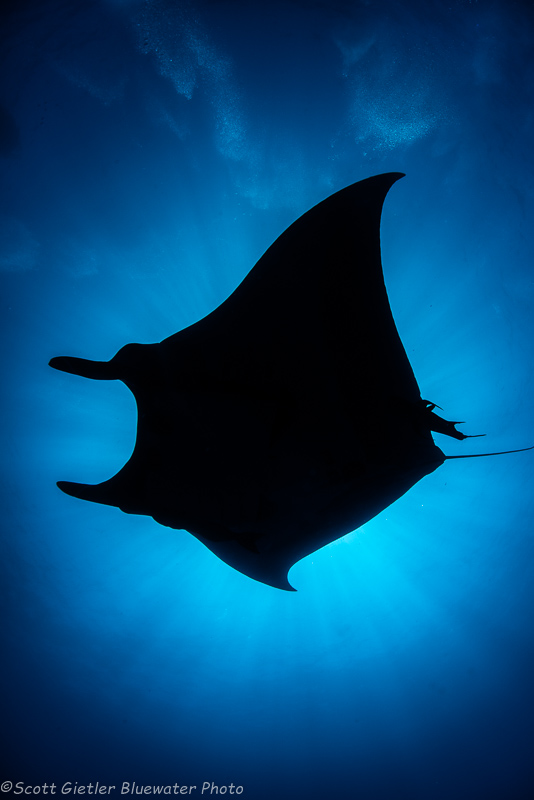

Practical Information
Diving Season: Year-round.December to April are the wetter months on Yap and Kosrae, and the best time to spot whales and dolphins. Conversely, Chuuk experiences more rain from May to November, which can sometimes reduce visibility.
Skill Level: Suitable for all levels.
Water Temperature: 81-86oF (27-30oC).
Getting There:Flights from the US take you to directly to Hawaii or Guam, and several airlines also do a direct flight from the major Asian hubs to Guam. Once in Guam, regular island-hopper flights will transfer you on to Yap International Airport (YAP), Chuuk International Airport (TKK), or Kosrae International Airport (KSA), as required.
Where to Stay:Chuuk has a great infrastructure for divers, with a good number of land-based resorts and local liveaboards available. Liveaboards tend to offer up to 5 dives a day, whereas resort diving offers 2 or 3 dives a day. Yap is well set up for divers, with a good number of professionally run dive shops supporting the hotels.There are also several dive resorts on the more remote Kosrae islands.
Non-Diving Activities:No visit would be complete without a sightseeing tour to learn of the Yap ancient culture. Try out sailing on their traditional canoes, or look through the Yap living history museum. Kayaking, deep-sea fishing, hiking/biking are a few of the other activities to keep you entertained during your visit.
Viewthe availability of some of the best liveaboards in Palau and book online at the best price!
6. Mozambique
For those seeking the ultimate megafauna adventure, diving Mozambiques 1,500-mile coastline is a hidden gem. This southeast African country enjoys the best of the Indian Oceans spectacular marine life in a wild and exhilarating environment quite unlike anywhere else.
Thrilling Adventures For Explorers
In the very north of the country, the Quirimbas Archipelago sits within one of the largest Marine Protected Areas in Africa. Relatively undeveloped, 125 miles of secluded islands and sandbars are home to flourishing coral reefs and mangroves, some fantastic wall dives, and exciting underwater topography. Five of the oceans seven species of marine turtle can be found in Mozambique, and three of them make this region their home. Further south, the more accessible Bazaruto Archipelago lies in the swift currents of the Mozambique Channel, offering the chance for some thrilling drift dives. Again, there is plenty of marine life here, including Mozambiques largest dugong population, and the chance to explore a myriad of impressive overhangs, canyons, and caves.


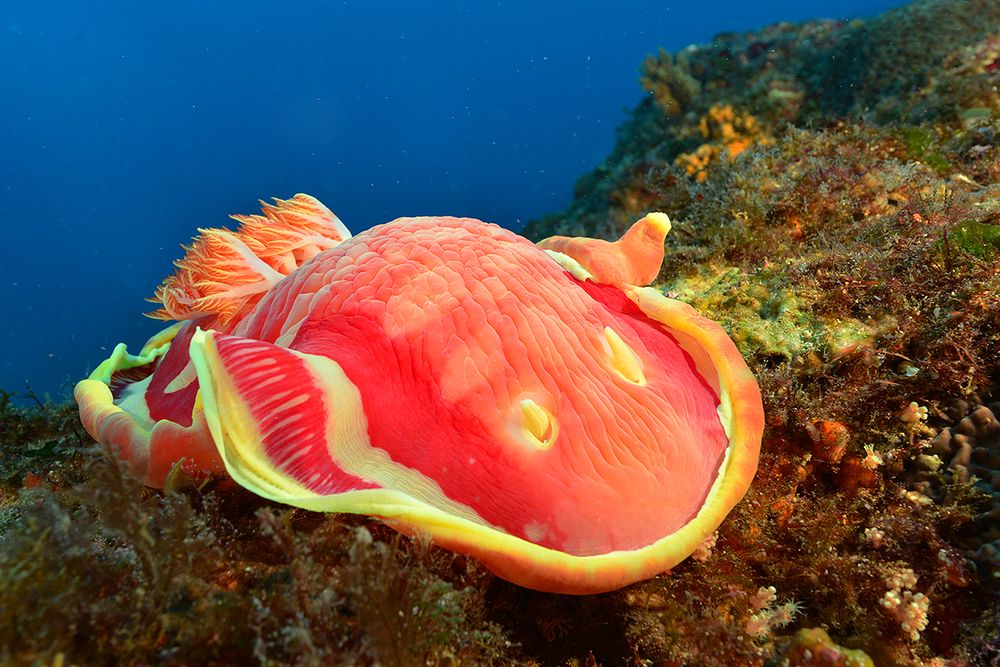

The coastline around the southern town of Praia do Tofo is a prime location for year-round whale shark and manta sightings. These ocean giants are attracted by the plankton-rich upwellings of the Mozambique Channel, and in August and September, humpback whales also congregate with their young. One of the best sites is the aptly named Giants Castle, where visitors have a good chance of seeing all three species in one dive!
The frontier town of Ponta do Ouro, in Mozambiques deep south, is a spectacular location and one of the best in the southern hemisphere to dive with some big pelagic shark species. Bull sharks, known here as Zambezi sharks and hammerheads, are just two of the 19 species that have been spotted. Ponta do Ouro also has some notable macrolife, with sites such as Pinnacles Reef covered in thick coral formations, patrolled by gigantic potato bass.






Diving in Mozambique may not be the most accessible, but for those willing to explore even a small section of this untamed coastline, the rewards are spectacular.
Practical Information
Diving Season: The northern archipelagos are best dived between June and September, whereas the southern sites can be dived year round. There is a lull in shark activity from April until July.
Skill Level: Some sites are suitable for all levels, however the more exposed sites and those with stronger currents require some experience.
Water Temperature: Quirimbas Archipelago 77-79oF (25-26oC), Bazaruto Archipelago 73-75oF (23-24oC), Praia do Tofo and Ponta do Ouro sites 73-84oF (23-29oC).
Getting There: Fly international to Maputo International Airport (MPM), and then transfer on to Vilankulo International Airport (VNX), or Inhambane Airport (INH) as required. To reach northern areas, it may be easier to fly to Dar es Salaams Julius Nyerere International Airport (DAR) in Tanzania and then transfer on to Pemba Airport (POL). From here, fly or take a ferry to the islands.
Where to Stay: The northern islands are very undeveloped with few lodges and virtually no resorts so forward planning is essential. The Bazaruto resorts are very high end, so again, you may want to plan ahead. On the mainland, a wider range of resorts and lodges is available to suit most budgets.
Non-Diving Activities: Mozambique is a great cultural location, with lovely colonial buildings and market streets to explore, as well as some good museums. Fishing and watersports are popular.
The wonderful diversity of scuba diving is reflected perfectly in the variety and excitement of the underwater environment. Our selection of sites showcasing the top dive destinations in the world really does emphasize the broad range of diving. From windswept islands to tropical reefs, whatever your interests you can find your perfect dive destination.
How To Book A Trip
Bluewater Travel can book you on a liveaboard or resort in Socorro, French Polynesia, Galapagos, Cocos, the Bahamas and 40+ other destinations in the world for the same cost or less than booking any other way. We know the diving, seasons, boats and cabins and when to go better than anyone else!
Email us or write to us in the live chat box to book a resort, liveaboard, or a Bluewater trip!
Further Reading
Check out these useful resources from our sister websites, Bluewater Photo and the Underwater Photography Guide
